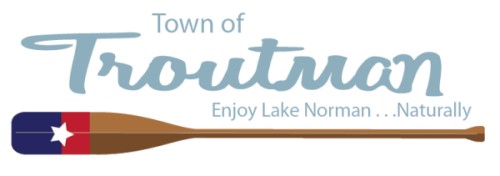
BY DEBBIE PAGE
debbiepage.iredellfreenews@gmail.com
After drawing up draft ordinances regarding regulation of livestock in the town limits, Troutman Interim Town Planner Jonathan Wells shared them with the Planning and Zoning Board during its February meeting.
Wells, after researching other municipalities’ ordinances and incorporating feedback from the Town Council and Town Attorney Gary Thomas, created the proposed changes to the town’s Unified Development Ordinance and to the Code of Ordinances.
The new Code of Ordinance language allows residents to keep non-commercial livestock (cows, sheep, pigs, goats, horses, donkeys, and mules) within some provisions. Those who already had livestock on their property under previous rules are grandfathered.
The animals must be kept at least 150 feet from public streets and residential and business structures in a large fenced area with a clean, healthy shelter in humane conditions. The position of the shelter can vary with written permission of Town Council if not injurious to adjoining properties.
The ordinance also sets minimum acreage per animal, including two acres per horse, cow, mule, or donkey and .25 acre per pig or goat. Wells got these recommendations from the N.C. Cooperative Extension experts at N.C. State University.
All commercial agricultural uses in town must be in areas zoned Rural Preservation or county Farmland District and must adhere to the same rules. Slaughter of livestock is not permitted in town.
Temporary goat grazing for control of invasive species would be allowed under the new ordinances, if adopted, under certain conditions with a temporary use permit issued by the town.
Temporary grazing will be limited from March 1 to November 30 at a maximum of two limited periods per year. The property must be enclosed with temporary or permanent fencing and the goats must be treated humanely.
Wells said the number of goats used per acre varied from business to business. No industry-wide goat grazing standard number per acre seems to exist.
Town Attorney Gary Thomas added a penalty piece to the proposed ordinance, imposing a civil fine of $50 per day for violation of any part of the ordinance. The owner in violation would be notified in writing and would have 10 days to pay any fines. If not paid, civil court action could result.
Criminal penalties (animal mistreatment, etc.) would be handled under General State 14-4 with a fine of $50 to $500 per day. Injunctions and orders of abatement could also be imposed by the town manager or designee to correct any unlawful condition.
To permit livestock in town, the UDO must also be updated to further define commercial agriculture uses (adding boarding, sale, purchase, breeding, and renting of livestock at riding stables and academies) and to reflect the allowance of temporary goat grazing.
Board member Karen Van Vliet asked if the town should require specific animal shelter materials or vegetation as a buffer, but Wells noted that the state now prohibits appearance regulations on residential single family homes.
Regulating the appearance of accessory buildings would be getting close to violating state statutes, according to Wells. “They must meet construction standards, but we cannot get into appearance,” he explained.
Van Vliet also questioned who would administer these rules on fencing and buildings. Wells said the town planner would control those areas, while the county would investigate violations of the safety and well-being of animals.
Board chair Randy Farmer suggested limits on the period for a temporary goat grazing permit but not on the number of goats since the number may vary to get the job done. He also believed town nuisance and county humane ordinances would take care of violations.
Farmer predicted few residents will get livestock or ask for temporary goat grazing permits, so he expects little additional work for town employees with these changes.
TROUTMAN ALTERNATIVES STUDY
Wells reported that the Town Council directed him to accept the Troutman Alternatives Study recommendation to continue improve Main Street and directed staff to develop an implementation plan for council consideration during its February 11 meeting.
Since then, Wells has entered the Main Street to Cedar Lane to Appliance Avenue recommendations into the 2050 MPO Metropolitan Transportation Plan to initiate project ranking for possible funding.
He also shared the study with Division 12 NCDOT staff to open dialogue on other recommendations in the study for which additional evaluation or research would be required.
Wells also began identifying study recommendation priorities for follow up with council, including a town-wide mobility study focusing in more specifically on town connector streets and updating bike and pedestrian plans.
160D UPDATES
Wells presented a draft of updates to the board’s Rules of Procedure to be compliant with State Statute 160D by the June 30 deadline. Wells added language from the statute to better define the planning board’s powers and duties and to require administration of an oath of office for each member.
He also warned that at the March meeting, the board will need to consider updates to the 300-page UDO to comply with the new statute.



